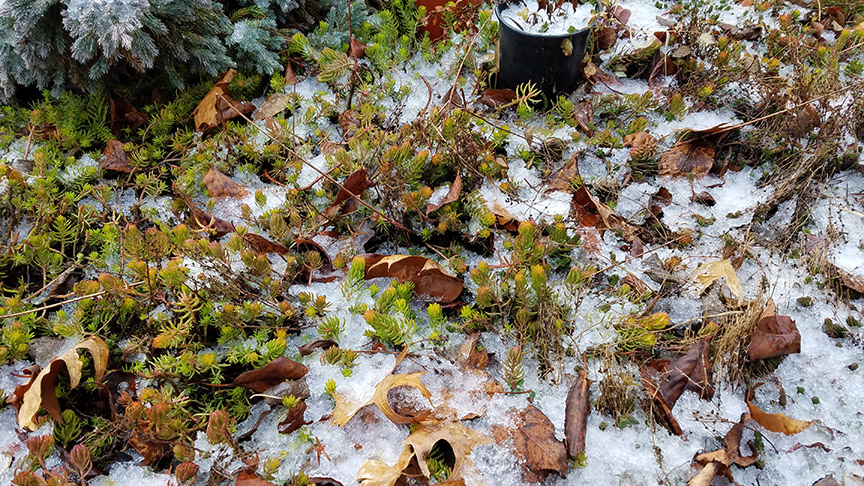 |
| White crocus. |
We have an extra day in February this year to enjoy, and it seems the first signs of spring are stirring--I wanted to write this special post to commemorate the Leap Year. So many varieties of crocuses are blooming in both front and back yards! Last fall I planted some species crocuses along the back bed; the one above is a lovely snow-white.
 |
| Front yard with crocuses. |
 |
| Deep purple 'Tommies" (Crocus thommasinianus) |
 |
| Yellow species crocus |
 |
| Feathered species crocus. |
The pale lilac "Tommies" in the front garden are looking blowsy, as the deep purple ones begin their show. Odd, how some varieties prefer to bloom a bit later, even with the same exposure--this happens every year! My Winter Aconite has yet to sprout, I hope the voles didn't eat them all.
The deer (or maybe rabbits?) chomped off most of the snow drops, but I did get to enjoy them for a few days at the beginning of their bloom cycle. I hope they'll multiply to eventually become nice clumps.
The February Gold daffodils have started to open, and the other narcissi are popping up. The hyacinths are starting to break ground too.
 |
| 'February Gold' daffodils |
 |
| Hyacinth buds |
I even found one tiny Siberian Squill blooming in the east bed.
 |
| Siberian Squill (Scilla siberica) |
I'd been hoping my Hellebores would be starting to bloom soon, but the buds are still closed up tight. Yesterday's rain will help.
 |
| Hellebore ' Flower Girl' |
My 'Queen Charlotte' violet is reviving and has some flowers. It's been trying to spread, but the deer eat most of the plantlets that grow outside of its protective wire cloche.
 |
| Violet 'Queen Charlotte' (Viola odorata 'Queen Charlotte') |
Last weekend I entered my painting of the native Pink Lady Slippers in the Virginia Orchid Society's show at Lewis Ginter Botanical Garden and received the third prize in the professional category--a number of my fellow artists from the Central Virginia Botanical Artists Circle also received awards.
I couldn't resist buying this miniature orchid from one of the vendors there, the tiniest Encyclia I've ever seen--the pseudobulbs are about 3/4" and so is the tiny fading flower. The grower had labeled this as Epidendrum polybulbon, but when I looked it up, the genus has been changed to Encyclia.
The miniature Encyclia requires a lot of moisture, so I've put it in the master bath with my other orchids, next to a couple of bromeliads. I hope I can keep it alive long enough to paint it, perhaps even get it to re-bloom!
 |
| Encyclia polybulbon orchid. |
I can't wait to see what the month of March will bring--will it come in as a lion or as a lamb?











































